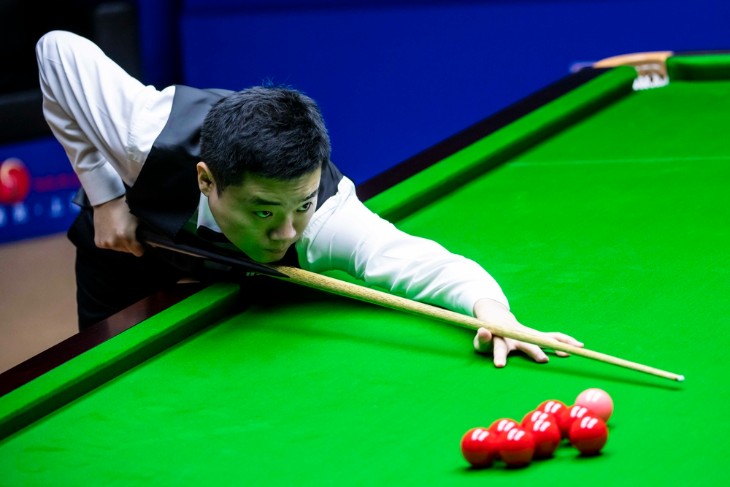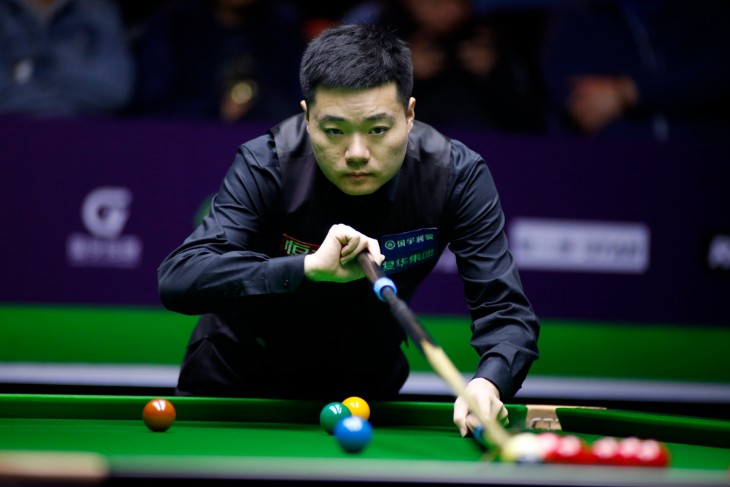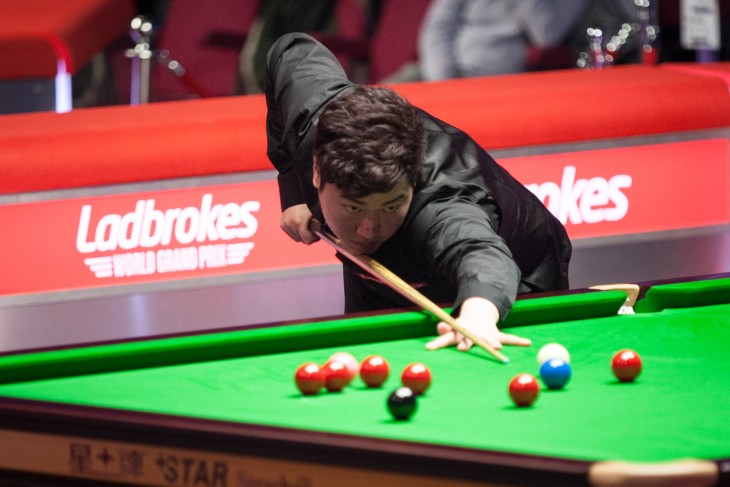- Reverse Sidespin: Techniques and Applications
- Applying Check Sidespin in Precision Shots
- Maximising Effectiveness with Running Sidespin
- The Fundamentals of Sidespin in Cue Sports
- Equipment Essentials for Executing Sidespin
- The Physics Behind Sidespin: How It Affects Ball Movement
- Common Mistakes in Applying Sidespin and How to Correct Them
- Mastering the Cue Action for Sidespin
- Sidespin in Practice: From Theory to the Table
- Conclusion
Reverse Sidespin: Techniques and Applications
Reverse sidespin, often termed as backspin or screwback in cue sports, is a pivotal technique that enables players to control the cue ball's post-impact trajectory with remarkable precision. This spin causes the ball to rotate in the opposite direction to its movement, allowing for a wide array of strategic plays. The application of reverse sidespin is particularly useful in positioning the cue ball for subsequent shots, making it an indispensable skill in games such as snooker, pool, and billiards.
To effectively apply reverse sidespin, a player must strike the cue ball below its equator with a deliberate and controlled cue action. The key lies in adjusting the force of the strike and the exact point of contact on the ball to dictate the degree of spin and the resulting movement of the cue ball. This technique not only demands a high level of skill and practice but also a deep understanding of the physical principles at play, such as friction and momentum.
Applying Check Sidespin in Precision Shots
Check sidespin is utilised to alter the natural angle of the cue ball after it rebounds off a cushion, enabling players to achieve precise positional control and navigate tight situations. This form of sidespin is especially beneficial when the player needs to counteract the natural path of the cue ball, either to avoid colliding with other balls or to position it favourably for the next shot. The technique involves imparting spin on the cue ball that opposes its direction of travel post-cushion contact, effectively 'checking' its angle and speed.
The application of check sidespin requires a nuanced touch and an acute awareness of angles. Players must strike the cue ball on its side, adjusting the point of impact and the force used based on the desired outcome. Factors such as the table's cloth type, cushion density, and ball conditions significantly influence the effectiveness of check sidespin, making adaptability a crucial aspect of mastering this technique. Through practice and experience, players learn to predict and control the complex interplay of forces at work, allowing them to execute shots with high precision and strategic depth.
Maximising Effectiveness with Running Sidespin
Running sidespin is applied to the cue ball to enhance its natural movement along the path of the shot, offering a sophisticated method for controlling both speed and direction. This technique is particularly effective in extending the cue ball's travel across the table surface, enabling it to maintain momentum and achieve positions that would be unattainable with a straightforward shot. The essence of advanced sidespin techniques like running sidespin lies in their ability to exploit the table's geometry, turning challenging layouts into opportunities for strategic play.
To maximise the effectiveness of running sidespin, players must consider several factors, including the angle of approach, the speed of the shot, and the specific point of contact on the cue ball. Precision in execution ensures that the spin complements the shot's intended direction, allowing for a seamless continuation of the cue ball's journey on the table. It demands not only technical proficiency but also a strategic foresight, making it a valuable component of skill development for any cue sports enthusiast.
The Fundamentals of Sidespin in Cue Sports
Sidespin, a critical element in cue sports, involves imparting lateral rotation to the cue ball, affecting its path and interaction with other balls. Understanding and mastering sidespin is essential for players aiming to elevate their game. The fundamentals of sidespin lay the foundation for more complex manoeuvres and are pivotal in achieving precise ball control and positioning.
- Techniques for Applying Sidespin: To apply sidespin, players strike the cue ball off its centre on the horizontal axis. The direction and amount of spin depend on the point of contact:
- Left sidespin is achieved by hitting the ball on its left side, causing it to veer right after contact with an object ball.
- Right sidespin results from striking the right side, making the cue ball move left post-impact.
- Impact on Ball Trajectory and Speed: Sidespin affects the cue ball in several ways:
- It alters the natural angle of deflection when the cue ball hits another ball, enabling shots that would otherwise be impossible.
- It can increase or decrease the cue ball's speed after impact, depending on the spin direction and the shot's context.
The mastery of sidespin begins with an appreciation for the underlying physics, including the concepts of friction, momentum, and angular momentum. Skill development in sidespin requires practice and a keen observation of the outcomes of different spin applications, allowing players to refine their technique and apply sidespin more effectively in game situations.

Equipment Essentials for Executing Sidespin
The right equipment is paramount for effectively executing sidespin, with each component playing a crucial role in the application and control of this sophisticated technique. For players aiming to master advanced sidespin techniques, investing in quality gear is a step towards enhancing their skill set and performance on the table.
- Cue Stick: The cue's weight, balance, and tip hardness significantly influence a player's ability to impart sidespin. A softer tip allows for better grip on the cue ball, facilitating more pronounced spin.
- Cue Ball: High-quality, phenolic resin balls offer consistent response to sidespin, essential for predictable ball movement and control.
- Billiard Cloth: The table's cloth affects how much friction is applied to the ball, impacting the sidespin's effectiveness. A smoother, finer cloth allows for more subtle and precise spin application.
- Chalk: Using high-quality chalk ensures a better connection between cue tip and ball, reducing slippage and increasing the accuracy of sidespin shots.
Selecting the right equipment is a fundamental aspect of skill development in cue sports. Players should experiment with different cues and accessories to find the combination that best suits their playing style and enhances their ability to execute sidespin effectively.
The Physics Behind Sidespin: How It Affects Ball Movement
The application of sidespin in cue sports is deeply rooted in the principles of physics, influencing the cue ball's trajectory and interaction with other balls and table surfaces. Understanding the physics behind sidespin is essential for players to predict and control ball movement, a cornerstone of advanced sidespin techniques.
When sidespin is applied, the cue ball experiences a lateral force that alters its straight path, causing it to curve in the direction of the spin. This curvature is a result of the Magnus effect, where the rotation of the ball creates a differential in air pressure on either side of the ball, leading to a sideways force. The amount of curve is influenced by the spin's velocity, the ball's speed, and the friction between the ball and the table cloth.
Moreover, sidespin affects the angle and speed of the cue ball after it contacts another ball or a cushion. The friction between the balls and between the ball and the cushion causes the transfer of spin, impacting the game's strategic outcomes. A deep understanding of these interactions is vital for skill development, enabling players to anticipate and manipulate the cue ball's behaviour for tactical advantage. This knowledge not only enhances a player's ability to execute precise shots but also their capacity to formulate strategies that incorporate the complex dynamics of ball movement influenced by sidespin.
Common Mistakes in Applying Sidespin and How to Correct Them
Even experienced players can encounter challenges when applying sidespin, with common mistakes affecting the precision and effectiveness of their shots. Recognising and correcting these errors is crucial for the skill development necessary to master advanced sidespin techniques.
- Incorrect Cue Alignment: Aiming inaccurately can lead to unintended spin or a missed target ball.
- Correction: Practice aiming techniques with a focus on aligning the cue stick's direction with the desired point of contact on the cue ball. Use aiming aids if necessary to develop a more intuitive sense of alignment.
- Excessive Force: Applying too much power can overwhelm the sidespin, causing the cue ball to behave unpredictably.
- Correction: Work on moderating the cue's speed at impact. A more controlled, measured strike allows the sidespin to influence the ball's path without the interference of excessive momentum.
- Poor Cue Ball Contact Point Selection: Striking the cue ball too far from its center, or not as intended, can result in loss of control over the ball's spin and direction.
- Correction: Focus on precision in striking the cue ball. Practice drills that enhance your ability to hit specific points on the ball consistently.
- Inadequate Chalk Application: Failing to properly chalk the cue tip can lead to miscues, especially when applying sidespin.
- Correction: Ensure the cue tip is adequately chalked before each shot to improve grip and reduce the risk of miscues. Develop a habit of chalking the cue tip regularly.
Addressing these common mistakes through targeted practice and adjustments in technique is essential for players seeking to enhance their ability with sidespin. Correcting these errors not only improves overall performance but also builds a solid foundation for the application of more complex and effective sidespin strategies in competitive play.

Mastering the Cue Action for Sidespin
Mastering the cue action for effective sidespin application is a critical component of skill development in cue sports. The precision and consistency of the cue action determine the accuracy and effectiveness of sidespin shots. A smooth, controlled stroke that delivers the cue tip to the desired point on the cue ball with the correct force and angle is essential. This requires a combination of proper stance, grip, and cueing technique to ensure that the cue moves in a straight line, allowing for accurate delivery of sidespin.
To refine the cue action for sidespin, players must focus on developing a stable and consistent stance, ensuring that their body supports a fluid, repeatable stroke. The grip on the cue should be firm enough to control the shot but relaxed enough to allow for the subtle adjustments needed for precise sidespin application. Practising drills that focus on delivering sidespin with varying degrees of intensity and from different angles can help players understand how their cue action affects the ball's behaviour. This hands-on experience is invaluable for integrating advanced sidespin techniques into competitive play, enabling players to execute shots with confidence and precision.
Sidespin in Practice: From Theory to the Table
Translating the theory behind sidespin into practical application on the table is a critical phase in the journey towards mastering advanced sidespin techniques. While understanding the principles of sidespin provides a solid foundation, the real skill development occurs with cue in hand, facing the challenges of live play. This transition from theory to practice involves not just executing sidespin shots but also learning to read the table, anticipate the outcomes of spin interactions, and adjust strategies accordingly.
Incorporating sidespin into practice sessions begins with simple drills designed to isolate and improve specific aspects of sidespin application, such as controlling the cue ball's direction after impact or managing the distance it travels. As proficiency grows, more complex drills that incorporate obstacles, such as other balls and cushions, can help simulate real-game scenarios. Recording and analysing practice sessions can also be incredibly beneficial, providing visual feedback that can highlight areas for improvement. Through consistent practice and focused effort, players gradually develop the finesse and tactical awareness required to effectively employ sidespin in competitive situations, enhancing their overall performance and strategic options on the table.
Conclusion
In the journey to master advanced sidespin techniques, the path from fundamental skills to the nuanced application of sidespin in competitive play embodies a comprehensive process of skill development. Each chapter of this exploration has underscored the multifaceted nature of sidespin, from the technical execution and equipment nuances to the strategic advantages it provides on the table. Mastery of sidespin is not merely about controlling the cue ball but also about integrating this control into a broader understanding of cue sports' physics, tactics, and mental demands.
[author}




.webp)

 (1).webp)




















